Concussions drive movement to curb headers in youth soccer
Jun 7, 2015, 12:06 PM
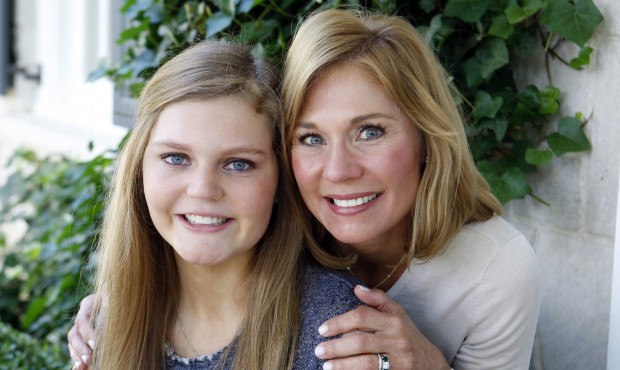
In this May 22, 2015 photo, Gracie Hussey, left, poses with her mother, Beth Hussey, at their home in Memphis, Tenn. After suffering multiple concussions playing soccer, Hussey has headaches, suffers from inexplicable nausea and several times a day she feels like she’s about to pass out. While her athletic career may be over, Gracie and her mother have embarked on a new endeavor -- advocating that youth soccer coaches keep headers out of the game until kids are 14. (AP Photo/Karen Pulfer Focht)
(AP Photo/Karen Pulfer Focht)
Gracie Hussey was just 7 when she had her first concussion. In a youth soccer match, she was trying to head the ball into the goal when she collided with another player.
Her mother, Beth, figures there were other concussions along the way but the worst came five years later, when Gracie crashed onto artificial turf, slamming the back of her head.
Now 15, Gracie can no longer play soccer. She has headaches, suffers from inexplicable nausea and several times a day she feels like she’s about to pass out.
“I had concussion symptoms all the time, but I didn’t really know what they were so I wouldn’t say anything,” she said recently from her home in Memphis, Tennessee. “I would see stars, like, probably every other game. But I didn’t know that wasn’t normal.”
While her athletic career may be over, Gracie and her mother have embarked on a new endeavor: Advocating for youth soccer coaches and organizations to keep headers out of the game until kids are 14.
At the Women’s World Cup this summer, there will be a lot of young athletes hoping to someday emulate players like American Abby Wambach, who is known for heading the ball with uncanny accuracy.
The Safer Soccer Initiative recommends that those kids not be taught headers until they’re high school age, after their brains and necks have had a chance to develop. The nearly year-old educational campaign is a joint effort between the Sports Legacy Institute, a concussion research and advocacy nonprofit, and the Santa Clara Institute of Sports Law and Ethics.
___
There has been a growing focus on concussion prevention in hard-hitting youth sports, like football. But little attention has gone to soccer, where headers, and the acrobatics and resulting collisions that often come with them, are a leading cause of concussions, said Dr. Robert Cantu, professor of neurosurgery at Boston University School of Medicine.
A study published in the American Journal of Sports Medicine in 2012 showed that football had the greatest incidence of concussions among high school athletes. Girls’ soccer was second.
“If it weren’t for headers, soccer wouldn’t be in the high-risk group for head injury, and it is, surprisingly. Many people don’t realize that,” Cantu said. “Girls are particularly prone to concussions compared to guys.”
Part of the danger is that no one knows just when or how a brain injury, or multiple injuries, can result in permanent damage, Cantu said.
The Sports Legacy Institute was involved in identifying the first case of chronic traumatic encephalopathy, a degenerative brain disease known as CTE, in a soccer player after examining the brain of Patrick Grange, an aspiring pro known for his headers who died in 2012 at age 29.
Cantu, who wrote “Concussions And Our Kids,” isn’t suggesting that kids shouldn’t play soccer, he just believes they should do it more safely, especially in formative years.
One of the first to jump on the effort was Brandi Chastain, a former star with the U.S. national team who scored the winning penalty kick to give the United States the title over China in the 1999 World Cup. Now she is a youth coach in Northern California, and a mom.
Chastain believes that if youth coaches can reduce the risk of concussions by focusing on footwork and special awareness rather than headers, it will also allow players to develop stronger fundamental skills.
“Now that I’m off the field and I’m stepping back I still feel the need to do something for the game. And I thought the best thing I could do is help make the team safer. As a mom, that’s an extra push. I want my son to go to the soccer field and be safe,” she said.
___
At this time, there isn’t one universal set of guidelines for introducing headers in youth soccer.
Most youth organizations discourage coaching headers until the age of 10.
Others take a more pre-emptive approach. Soccer Shots, an introduction-to-soccer program for young kids that has franchises nationwide does not teach headers as policy.
Washington Youth Soccer’s approach was spurred by a comprehensive youth concussion safety law that the state passed in 2009. Similar laws have been adopted by most states.
One of the key provisions of the law mandates that young players who have been concussed get permission from a licensed health care professional before returning to action.
Guided by the phrase “when in doubt, take them out,” Washington Youth Soccer has also joined with Connecticut-based Triax Technologies to look at the number of blows players take to the head and how hard they are.
At a recent tournament in Oregon, several 9-year-old players wore specially designed headbands with an electronic sensor that gathers data that can later be viewed by coaches and parents. While not a diagnostic tool for concussions, the technology is valuable in assessing whether a child is vulnerable.
“It’s not telltale of whether there’s a concussion, but it’s another piece of information and another metric I can use for the best interest of the athlete,” coach Todd Veenhuisen said.
___
Beth Hussey wishes she’d been educated about the dangers of concussions when Gracie, her youngest daughter, started playing.
“She’s very tough,” Beth Hussey said. “She was going to fight for that ball no matter what it took. She’s definitely very competitive and a great athlete. But I think you take that personality and you take a coach saying, ‘You’ve got to head the ball, you’ve got to take the hit,’ if you’re competitive and you want to win, you’re going to do whatever that coach tells you.”
An overachiever, Gracie played with kids who were older than her. She said she was taught to head the ball after only a handful of practices with her first team, and was told: “Don’t ever let the ball hit the ground.”
The concussion that Gracie believes caused the most damage came when she was 12, after another player shoved her and she again hit her head on the turf, losing consciousness for several seconds. She played the final minute of the match, but got to the sideline and collapsed.
“If I had known all the consequences that I could have faced from competitive soccer, and all about concussions,” she said, “I don’t know if I would have played with the same intensity that I did.”
Copyright © The Associated Press. All rights reserved. This material may not be published, broadcast, rewritten or redistributed.


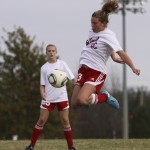
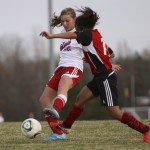
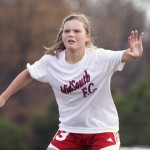




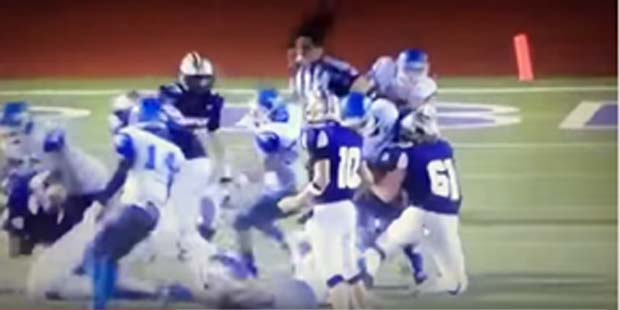


Comments